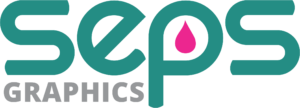Digital vs. Traditional Printing: Exploring the Advantages and Drawbacks of Contemporary Printing Methods.
Digital vs. Traditional: The Pros and Cons of Modern Printing Techniques
In today’s fast-paced world, the printing industry has undergone a significant transformation with the introduction of digital printing techniques. While traditional printing methods have been the go-to for decades, digital printing has emerged as a formidable competitor, offering a range of benefits and drawbacks that have reshaped the industry. In this blog post, we will explore the pros and cons of both digital and traditional printing techniques, providing valuable insights for businesses and individuals seeking the most suitable printing solution for their needs.
Digital Printing: The Pros
1. Cost-Effective: Digital printing eliminates the need for costly setup processes, making it an ideal choice for small print runs. With digital printing, businesses can save money by producing only the required quantity, reducing waste and minimizing storage costs.
2. Quick Turnaround: Digital printing offers rapid turnaround times, allowing for on-demand printing and faster delivery of materials. This is particularly beneficial for time-sensitive projects and marketing campaigns that require immediate distribution.
3. Customization: Digital printing enables high levels of customization, making it easy to personalize each printed piece with variable data, such as names, addresses, and images. This level of personalization can enhance the effectiveness of marketing materials and promotional items.
4. High-Quality Output: Advancements in digital printing technology have resulted in impressive print quality that rivals traditional offset printing. Digital printers can produce sharp images, vibrant colors, and fine details, meeting the high standards expected in the modern printing landscape.
Digital Printing: The Cons
1. Limited Substrate Options: Digital printing is often restricted to specific paper types and weights, limiting the range of materials that can be used for printing. This can be a drawback for businesses seeking unique textures and finishes for their printed materials.
2. Cost Inefficiency for Large Runs: While digital printing is cost-effective for small print runs, it can become less economical for large-scale production due to the higher cost per unit compared to traditional offset printing.
3. Color Consistency Challenges: Achieving color consistency across multiple print runs can be more challenging with digital printing, as variations in color output may occur between different printers or over time.
Traditional Printing: The Pros
1. Versatility in Substrates: Traditional offset printing offers a wide range of substrate options, including various paper types, thicknesses, and specialty finishes. This versatility allows for greater creativity and customization in print projects.
2. Cost-Effective for Large Runs: Traditional printing becomes more cost-efficient for large print runs, as the initial setup costs are spread across a higher volume of printed materials, resulting in a lower cost per unit.
3. Color Consistency: Offset printing provides consistent color reproduction, making it a preferred choice for projects that require precise color matching and uniformity across multiple copies.
Traditional Printing: The Cons
1. Lengthy Setup Time: Traditional offset printing involves time-consuming setup processes, including plate creation and press setup, which can result in longer lead times for production.
2. Limited Customization: Compared to digital printing, traditional offset printing has limitations in terms of variable data and personalized printing, making it less suitable for projects that require individualized content.
3. Waste and Overruns: Traditional printing often leads to higher levels of waste and overruns, as it requires minimum print quantities to be cost-effective. This can result in excess inventory and unnecessary expenses for businesses.
In conclusion, both digital and traditional printing techniques offer distinct advantages and drawbacks, catering to different needs and preferences in the printing industry. While digital printing excels in cost-effectiveness, speed, and customization, traditional offset printing stands out for its versatility in substrates, cost efficiency for large runs, and color consistency. Ultimately, the choice between digital and traditional printing should be based on the specific requirements of each print project, considering factors such as quantity, customization needs, substrate options, and budget constraints.
As the printing landscape continues to evolve, businesses and individuals can benefit from understanding the pros and cons of modern printing techniques to make informed decisions that align with their printing objectives. By leveraging the strengths of both digital and traditional printing, it is possible to achieve impactful and cost-effective print solutions that meet the diverse needs of today’s dynamic market.
